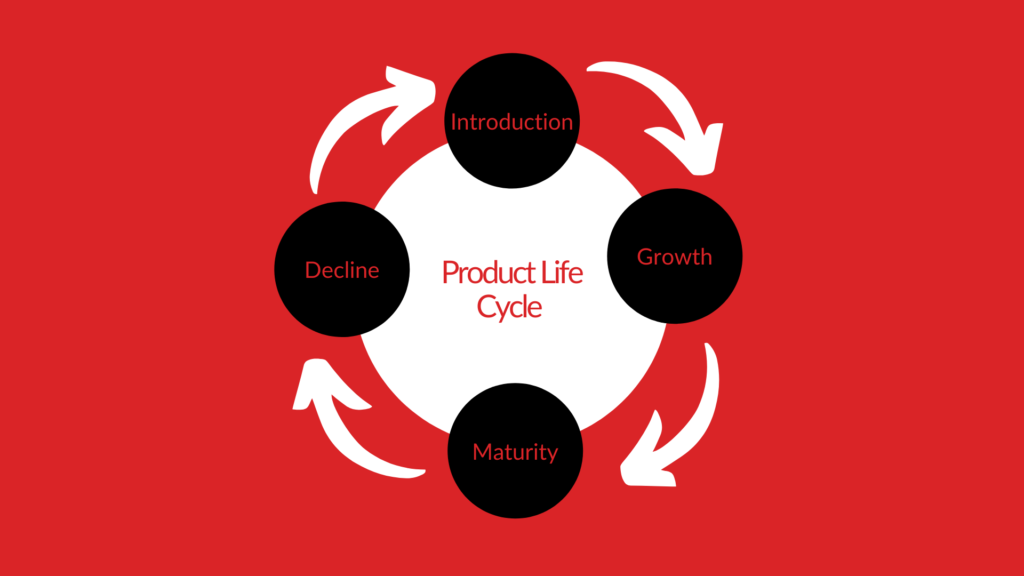A printer that generates solid three-dimensional objects from a digital file or a pair of goggles that catapults its wearer into a fictional universe. At some point, both of these ideas sounded ludicrous. Today, these innovations are some of the most iconic creations of the past decade. So, what transitioned these new product ideas from crazy to coveted? The answer is innovation marketing.
Innovation marketing bridges the gap between conceptualizing new ideas and introducing them to the public. With nearly 80% of executives fearing their current business models are at risk of disruption and rumors that the top-traded S&P 500 companies will be replaced over the coming decade, there’s never been a more prominent demand for innovation marketing.
Now is the time to learn the relationship between innovation and marketing and how these concepts influence modern entrepreneurship. Keep reading to understand the role of marketing innovation in the product life cycle and how it impacts a digital marketing strategy.
What is Innovation Marketing?
Innovation marketing is conceptualizing and implementing methods of promoting, selling, and researching new products and services. According to Harvard Business Review, innovation marketing is grounded in “understanding people’s fundamental needs and drivers, identifying customers, and developing the entire go-to-market and usage ecosystem.”
In simpler terms, innovation is implementing ideas that create new products or services. Marketing is the process of promoting and selling products or services. With the two combined, innovation marketing runs the gamut from ideating new products and identifying a product-market fit to creating a community and scaling the creation via digital marketing.
It’s common for innovation marketing to be confused with innovative marketing — but they are not the same concepts! Innovation marketing is the process of marketing new products or services. In contrast, innovative marketing is a new way of marketing that focuses less on the product and more on a new, never-before-seen marketing method.
For instance, geofencing marketing is a recent innovative marketing strategy that allows brick-and-mortar businesses to target individuals within a specific geographical radius via GPS, Wi-Fi, or cellular data. The product or services marketed are not new; however, the marketing method is an example of innovative marketing instead of innovation marketing.
The Relationship Between Innovation and Marketing
We know that innovation turns an idea into a new product or service (product innovation), and marketing communicates the product or service’s value to sell and profit (lead innovation). But how do the two work together? The answer is that product innovation and lead innovation always go hand-in-hand.
Without marketing, your innovation will not reach an audience to market it, nor a product-market fit. Market research identifies a product-market fit. Without marketing, the creation will have no clear message or value proposition, meaning no leads and little to no sales.
On the flip side, what happens if you market without innovation? Even the best digital strategy in the world can’t sell a product with no unique value, which is the obvious result of product development that lacks innovation. Without a new or unique idea, the product will likely fall flat, and the business will spend thousands of dollars on failed marketing materials.
No matter how you spin it, innovation will always require the support of proper marketing, and marketing will also need a foundation of innovation. Innovation marketing is why new ideas are accepted by the public and turned into products we know and love. Innovation advances our society, and marketing is what keeps our community informed.
The Role of Innovation Marketing in the Product Life Cycle
Innovation and marketing are practically inseparable, but how does innovation marketing impact the product life cycle? Product life cycle refers to when a product is introduced to the market until it’s removed from shelves. This is typically broken into four stages: introduction, growth, maturity, and decline.
While innovation plays a significant role in the early product life cycle, marketing strategy assists in each stage from introduction to decline. This is especially true for innovative projects, such as tech product development, which require the assistance of marketing to locate a product-market fit and encourage the general acceptance and excitement for a new product.

Take a look at the significant role innovation marketing plays at each stage of the product life cycle.
1. Introduction
Regardless of B2B vs. B2C markets, all new products begin in the introduction stage. This stage requires a hefty marketing strategy to identify a target audience and learn how to position the product features to match customer needs. Most innovation marketing budgets will go to market research. Marketers in the introduction stage focus on creating awareness to begin generating leads via social media or search ads.
2. Growth
If an innovation succeeds in the introduction stage, it moves to the growth phase. Growth is typically characterized by an increased demand, which leads to a rise in production and general availability. Therefore, innovation marketing is critical to keep watch of data analytics and recognize whether incremental innovation is necessary for the product design or key features to maintain demand.
3. Maturity
Maturity is the most profitable stage of the product life cycle because the innovation has grown in popularity, and production and marketing costs have declined. At this point, the product doesn’t need to be explained; it must be differentiated to maintain a competitive advantage. This is where innovation marketing shines, and various new digital marketing methods are introduced to separate the product from the crowd.
4. Decline
The decline stage of the product life cycle that’s often inevitable in today’s international business. Over time, competition will become overrun by competition, as other companies try to emulate its profitability. Other companies will often offer enhancements or lower prices on the existing product, forcing the innovation to lose its market share. Customer engagement begins to slip, and even the hottest digital marketing trends aren’t enough to stop the eventual decline.
A Marketing and Innovation Success Story: Netflix
When you think of a successful innovation strategy, look no further than Netflix. Netflix was founded in August 1997 as a rental DVD service that operated through the mail. VHS tapes
dominated the video-renting market at the time, but the sky-high rental fees left the customer experience with much to be desired. So, Netflix decided to turn the market on its head by allowing consumers to select DVD rentals online and deliver the discs to their door.
Soon, nearly every household in the U.S. owned a DVD player. Netflix pivoted its marketing process to a subscription-based model, where consumers could rent DVDs online for a fixed fee. However, the Netflix executives didn’t stop there. They continued to push market research, testing where the market would land in the next five to ten years. They discovered that the DVD business, much like the VHS business before it, wouldn’t last much longer — so they pivoted again.
With data analytics as their guide, Netflix innovated a new online, on-demand service to match evolving consumer needs. By grounding their innovation in marketing and supporting their subsequent business shifts with an effective marketing strategy, Netflix grew significantly. The company is now a significant international business that dominates modern streaming because they trusted innovation marketing.
When Innovation Marketing is Ignored: New Coke
When companies ignore innovation marketing, the result can be the punchline of a long-running joke. Such is the case with “New Coke,” an example of failed innovation management from 1985 that’s still taught in marketing classrooms today. In April of ‘85, the Coca-Cola Company announced significant changes to its nearly century-old secret formula — changes that the public didn’t request.
Coca-Cola executives were sure that the addition of corn syrup to sweeten the “New Coke” would be a slam-dunk with the public, and supposed market research confirmed that theory. However, the company forgot one major step: to involve the public in their innovation process or marketing mix. The result? Consumers in California collected petition signatures, and folks in Seattle set up a hotline.
In short, the public was not happy that the “New Coke” formula changed what they loved about the original Coca-Cola. The company thought they had an innovative idea but failed to confirm the product-market fit and adequately communicate with their target market. Marketing was their bridge to their consumers, and they essentially burned that bridge. Fortunately, Coca-Cola did listen to the public outcry, and “New Coke” quickly became a failed innovation of the past.
A Great Innovation Requires Great Marketing
Innovation and marketing should always go hand-in-hand. Innovation brings forth incredible creations, while marketing brings them to the forefront of society. Together, they bridge the gap between conceptualizing new ideas and introducing them to the public.
If you’re unsure how to market your innovation project, a full-service digital marketing agency can help. Bullseye Strategy is a Fort Lauderdale-based agency with innovative marketing practices and a decade of experience bringing new products to market. You worry about the innovation itself, and we’ll communicate that innovation to your target audience. Contact us today to get started.







